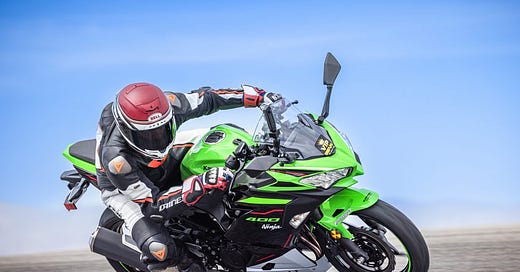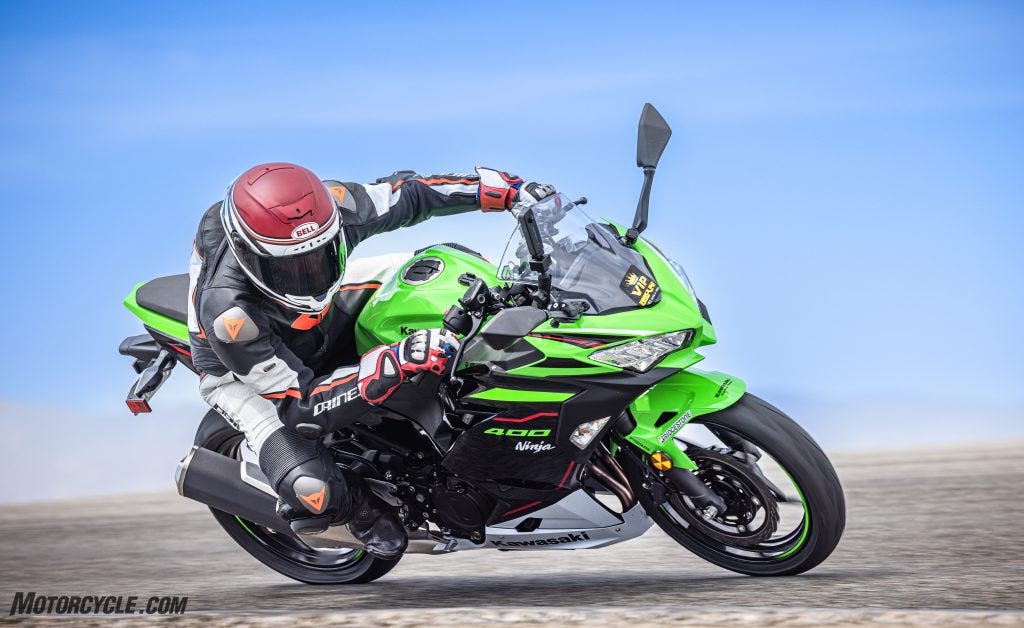Stop Messing With Your Stuff!
Disclaimer: I think Ken Hill has a podcast with the same title, and the subject matter is similar.
This post is directed more toward the regular track day rider who is consciously working on getting better (faster/safer), not necessarily racers, though it is probably applicable to many racers to some degree. My personal disclaimer is that I'm far from the fastest rider out there but my goal is to use empirical data and accuracy to develop my own tangible skills and develop feel for what the vehicle is telling me.
I've long been a fan of 'ride what ya' brung.' I feel that there is a huge value in getting to know the hardware you're using and figuring out what you can and can't do with it. I've seen riders on old Interceptors and even a PCH800 do things you might not imagine possible--the riders had owned those bikes for years and done a ton of miles and have worked out what they can do consistently. Last year I paid a track side vendor to set up my street bike for track. The whole weekend it felt vague on turn-in but I rode it as it was. I rode it again at Thunderhill East and was 2 seconds off my previous outing on my Daytona. When I got home I found out they'd gone to 15 out of 16 turns on preload and backed out of the damping all the way on the front. No wonder it felt off! Either way, I managed to figure out how to ride it with that all-spring front end. The more time I spend at the track, the more I'm coming to believe I'm in the minority on this train of thought though.
I have two primary bikes I use at the track, a Daytona 765 that is track prepped but the engine is stock except for a slip-on and the suspension has been set up by MC Tech and gets annual minor adjustments and a Ninja 400 with stock suspension, Q3+ tires, and upgraded brakes. I'm nowhere near the capabilities of the Daytona and I'm just starting to find *some* of the limitations of the Ninja's platform. I get a lot of flack from friends about the Ninja--they suggest that I upgrade the suspension, put slicks on it, etc. That bike is a learning tool for me. When I get to the point where I can't go any faster without additional risk, I'll think about upgrading bits. For the time being, I know I can go faster with it. There's also a lot to be said for the convenience too--no warmers, I'm not futzing with knobs, etc. I set the pressure before the first session, hop on it, and go. Tires last forever, it's cheap to operate, and it won't break my heart if I drop it. I'm starting to get a feel for sliding the front and the rear on that bike, figuring out when the front suspension is collapsed under braking and the tire is protesting, etc. It's also a blast to catch and pass big bikes with it too.
I see loads of people fiddling with their suspension at track days, making big changes on the front and rear between sessions, and just not feeling good about the bike. Don't get me wrong, a base setup is very important, whether you do it yourself or having a qualified suspension tuner assist (pay attention to what they change though) but once you've got that done, don't mess with it! Learn to ride what you've got, get a feel for limitations and learn to consistently ride to those limits.
One of the first times I rode the Ninja 400 at Sonoma Raceway, I exchanged some texts with my riding coach. The discourse was something to this effect:
Him: Is the front end wiggling under braking?
Me: Yes, at turn 9 and turn 11
Him: Okay, it should be that way for those turns and turns 1, 4, and 7
That short exchange was an epiphany for me. THAT is the bike's limit, it's not doing something it's not supposed to, but if I'm not getting that sensation in hard braking zones, I'm not maximizing my or the bike's potential. When/if I get to that lap after lap consistently, then I might think about upgrading suspension. Until then, I'm not giving myself permission to upgrade bits. In the mean time, this is how I go about developing a feel for limits without crashing.
I rode my ADV bike at Sonoma on a cold, wet, windy day. Once the track was mostly dry (but still cold and windy), I put the bike in the most aggressive mode (Dynamic Pro) and the suspension in the 2nd firmest setting and rode it to a respectable pace. I definitely got to the point where I felt like I was getting uncomfortable with the way the bike was feeling, and I kept working to ride to that point in more areas. I had the traction control lit up at just about 100mph exiting turn 6 in 4th gear. Along those lines, when riding the Daytona, I'll often leave the ABS in sport mode (2nd least intrusive level) for the first session or two. If I'm not feeling the ABS intervene in the big braking zones, I'm not braking to the traction potential. Once I feel the ABS consistently in those areas, I switch to the most aggressive mode (there's still some TC and ABS, but not a lot). Hell, my riding coach rode the bike for the first time in 'track mode' and in less than one full session, he got within a couple seconds of a qualifying pace for MotoAmerica. He didn't notice ABS or TC holding him back.
I know so many riders who immediately disable the electronic nannies and/or bypass the ABS, but for the vast majority of riders, those systems aren't holding them back. Electronics can be an amazing tool for finding limits without crashing (assuming you're practicing good technique). Yes, brakes do feel better without the extra ABS plumbing but if you have the option, I'd highly suggest that you leave those in place, even starting out in a more intrusive mode until you find the limits of each level. Once you're consistently doing that, kick it up a notch. At the same time, I don't recommend becoming dependent on the electronics. I've seen more than one rider on a liter bike pin the throttle while leaned over and the engine sputtering while the electronics held power back. I've seen a professional (paid) rider crash after becoming reliant on sophisticated electronics and then immediately riding an analog bike. Based on what I've seen and experienced, unless you're on the fast end of the A group and seldom or never crash, if you feel like the electronics are holding you back, you're probably doing something wrong.
So yes, get a good base setup for your bike with ergonomics and suspension, but then learn to ride the bike that way. If you have a good base, you don't need to make setup changes between sessions or tracks, we need to learn how our setup works in different environments and work to that.



